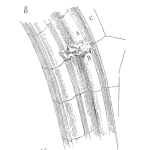
Imagine you were a rancher with a herd of cattle and a small field in which to graze them. One of your primary concerns include determining how many cattle the field could support. With too few cattle, you give up potential earnings that the field could readily sustain. But too many cattle consume the grass faster than the field could replenish it, resulting in malnourished cattle and degraded land quality.
Therefore, as a rancher with long-term prospects, inspecting and maintaining the field, planting new grass, and limiting the number of new cattle in the field all become a cornerstone of your business model.
But one day, the local government opens an enormous swath of premium grazing land that all ranchers are welcome to use without cost. Naturally, you’re interested in this opportunity since it would allow you to increase your herd size (and resulting profits) without any increased investment. At first, this is a windfall for your ranching business as you’re able to expand your herd about as fast as you can afford to buy new cattle. Profits increase. Reinvestments increase. Plus, there’s plenty of cash left over for a new saddle and some of those fancy boots you’ve been eye-balling at the general store. And you continue this unfettered upward trend for several years, as do all the other ranchers in your community.
But at certain point, when all the ranchers had grown all their herds and bought all the fancy boots in the general store, the public grazing land reached the same sustainability limit as your small field, where the cattle consumed the grass faster than the land could replenish it. In addition, since no one person owned the land, no one bothered to plant new grass, rotate herds, or maintain the pasture. Instead, each rancher sought after their own interests instead of the interests of the entire community. In the end, the public pastures were overgrazed, lost their biodiversity, gave way to erosion, and became unusable to everyone.
Such is the economic problem called the “Tragedy of the Commons”, popularized by American ecologist Garrett Hardin in his 1968 article of the same title, where the full benefit of utilizing a shared resource is gained by a single participant, but its full cost is paid by everyone. It is this dilemma that environmentally sustainable practices are designed to resolve.
When individual participants over-graze the world’s “fields” – our fresh water supplies, forests, aquaculture, fossil fuel reserves and other natural resources – we all pay the price in the form of scarcity, contamination, and lost opportunity. Hardin offered a solution to this tragedy he called “mutual coercion”, a set of benefits and penalties that compel all participants to behave in a way that helps the common good. These coercion mechanisms can largely be divided into three categories:
- Improved financial performance
- Government incentives and mandates
- The attraction of customers that value the common good
According to a recent study, “almost 40% of greenhouse gas abatement could be achieve at a negative marginal cost”. In other words, investments in sustainable technologies such as LEDs to replace halogen and incandescent bulbs, and equipment to recycle post-consumer plastics instead of manufacturing virgin plastic, have a positive return on investment. This is certainly the easy side of “going green”.
Once the obvious savings of shifting to greener technologies and practices have been realized, companies then factor in the incentives and mandates offered by local and state governments. For instance, I recently received a brochure presenting the federal tax credits available to people who have solar panels installed at their homes. Without the tax credit, a positive ROI may be difficult to achieve. This is an example of how governments can intervene to shift the ROI calculations and help people make more sustainable choices.
Lastly, with the growing popularity of Public Benefit Corporations like Patagonia and Plum Organics, suppliers to these and later adopters of sustainable practices are now finding new value in complying with best sustainability practices. Reduced and sustainable packaging designs and materials, environmentally optimized facilities, and eco-conscious shipping practices are all essential approaches used by suppliers selling into these markets.
As engineering and manufacturing professionals, we can all finds ways to preserve our natural resources, for the benefit of everyone, through sustainable processes, product designs and facilities.
Ray Harkins is a manufacturing professional and online educator who offers high-quality, low-cost learning opportunities to help close the manufacturing skills gap. You can find him at www.themanufacturingacademy.com, and use the following discount coupon codes to get great deals of some of his most popular and highly rated classes:
Leave a Reply